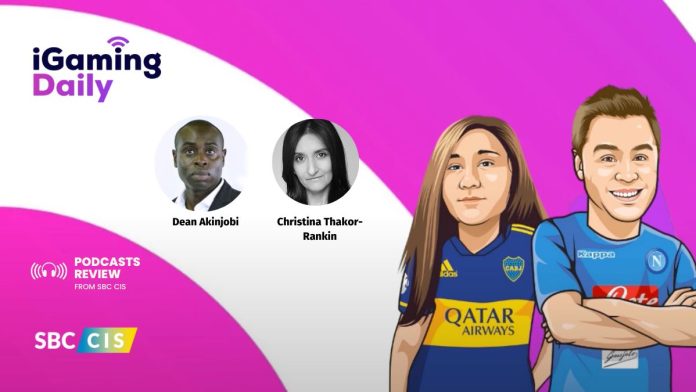The FIFA Women’s World Cup is in full swing in Australia and New Zealand. In a recent iGaming Daily podcast the Host and Editor of Insider Sport Joe Streeter met with SBC’s Head of B2B LatAm, Lucía Mouriño, as well as Dean Akinjobi, CEO and Founder of Football Media and Christina Thakor-Rankin, Principal Consultant at 1710 Gaming to talk about the importance of broadcasting rights for the World Cup, commercial opportunities for players and converting fan engagement on a domestic level.
The group started with discussions surrounding The Women’s World Cup and how it captured wider football audiences’ imaginations.
“I’m very excited. Women’s football has been growing a lot in the past few years, especially after the 2019 tournament, so I’m excited to see what’s going to happen this time,” stated Mouriño.
Thakor-Rankin added: “I think It’s going to be better than the men’s. Women’s sports have been growing exponentially over the last few years and Women’s soccer in particular has really started to capture attention. I think we’re in for a really interesting World Cup. We’ve got teams in the women’s game who are actually better than the men’s equivalent back home.”
“From a personal point of view here at Football Media, we’ve been supporting women’s football even before 2019, and we’ve just seen the growth curve happen both from the commercial side and the growth of the game as a whole,” mentioned Akinjobi.
The group then discussed the issue of the pay gap between men’s and women’s soccer.
“I think soccer is no different from other sports. We’ve had a similar argument in tennis. Similarly, cricket, rugby, and every sport is kinda having these conversations. I think we’re in a much better place than we were, but there’s a lot more work to do. It’s not just prize money, it’s equal facilities, equal pay, and merchandising,” stated Thakor-Rankin.
“I think the time to level the playing field was decades ago. It’s the same sport. The women trained the same, if not harder than the men to make it to the World Cup. Considering that most professional players need another source of income to make a living,” added Mouriño
Akinjobi expanded: “You have to look at what Women’s football is doing. I think that women’s football is an amazing sport, but it stands for more than just a sport. It stands for inspiring the next generation, equality and diversity.”
“The men’s game simply doesn’t need that kind of money as the women’s game does,” concluded Streeter.
The group continued with discussions around broadcasting and the importance of having the Women’s World Cup on mainstream television.
Thakor-Rankin: “You can see the importance of being able to watch the games live and experience the excitement of the moment when something happens like the English player Chloe Kelly scoring a goal against Germany then taking her jersey off and revealing a Nike bra causing the subsequent surge in searches for Nike bras.”
In general, the Women’s World Cup has a total of nine global sponsors and 14 tournament supporters, with long-standing FIFA partners such as Adidas, Coca-Cola, and Visa all holding a presence.
FIFA’s efforts to make this year’s Women’s World Cup larger are exemplary by selling out its sponsorship packages, with a 150% increase in partners for the event, rising from 12 in 2019, to now 30 partners.
The football governing body has set a target of two billion global viewers for this year’s tournament, which will vastly eclipse the record-setting 1.12 billion figure during the 2019 competition.
“It makes it accessible to people whom it might not otherwise be accessible to. I think it’s going to be the biggest women’s sporting event this century, I think it’s really crucial that they’re on mainstream TV,” stated Akinjobi.
Don’t forget to subscribe to our Telegram-channel!










